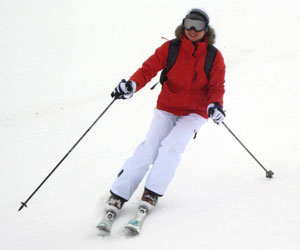Arthroscopic Rotator Cuff Repair in Portland, OR

Rotator cuff tears are a common injury among older adults and athletes. A torn rotator cuff tendon can interfere with your daily activities, weaken your shoulder, and cause severe pain. Fortunately, with the right treatment you can recover from a torn rotator cuff.
What is the Function of the Rotator Cuff?
The rotator cuff is a network of 4 muscles that insert together on the head of the humerus or arm bone. Together they function to allow arm motion away from the side and overhead while also serving to maintain the stability of the shoulder joint.
How Does the Rotator Cuff Tear?
Usually a tear starts when the tendon begins to fray like a rope. Over time, as fraying progresses and the tendon wears down, it may snap completely. Athletes, laborers, and those over 50 years old are most susceptible to rotator cuff injury due to the repetitive stresses from activity and wear and tear over time. Acute traumatic injuries may cause a rotator cuff tear, however frequently tears are caused by age related tendon degeneration. Bone spurs may also develop and rub on the rotator cuff, weakening or tearing the tendon. This process is termed “impingement syndrome,” and is also a common cause of shoulder pain.
How Do I Know if My Rotator Cuff is Torn?
If your rotator cuff is torn, you may feel pain or weakness when attempting to lift or rotate your arm and you may feel catching or snapping in your shoulder with movement. Frequently you will have shoulder pain at night and have difficulty finding a comfortable position to lie in.
If the tear happens suddenly, from a fall or other trauma, you will immediately feel intense pain and weakness, and possibly feel a snapping sensation. You may find it hard to lift your arm away from your side or overhead. If the tear occurs slowly over time, your pain will likely be mild at first, and gradually increase over time, to the point where over-the-counter medicines no longer help.
How Do I Treat a Rotator Cuff Tear?
If you are experiencing any shoulder pain, it’s a good idea to see your doctor before the condition progresses. Early intervention can help speed your recovery and help you avoid surgery.
Your doctor will examine your shoulder to test your arm strength and check for any tenderness or abnormality. He can use a combination of x-rays and MRIs or ultrasounds to determine if you have a rotator cuff tear or any impinging bone spurs.
In cases of small or partial rotator cuff tears, your doctor will frequently recommend nonsurgical treatments. In the case of severe injury with large acute tears surgery may be indicated right away. Immobilization of your shoulder in a sling will help with the pain from an acute tear. Ice treatment and anti-inflammatory medicine such as Ibuprofen or Aleve can help to control pain and inflammation. Your doctor may give you a steroid injection for this same purpose. Physical therapy may help to strengthen your shoulder and prevent further injury. If you don’t see improvement from these methods, then a surgical rotator cuff repair may be an option.
What Does Surgery Involve?
Thanks to advancements in technology, the traditional open surgery method is rarely necessary these days. Most surgeries can be done arthroscopically, using a small camera inserted into the joint.
The doctor can insert the camera into the joint through a small incision and he will use small, thin instruments to perform the surgery through several small access portals. The camera will display the images on a monitor so the doctor can see inside the joint. The rotator cuff tendon can be repaired to the bone using small suture anchors and bone spurs will be removed with a high speed burr.
What Happens After Surgery?
Rehabilitation after surgery is crucial to get you back to your normal activities. Your therapy will progress in stages as you heal.
For the first 4-6 weeks, you will need to keep your arm in a sling to protect the repaired tendons as they heal. Once your doctor decides it’s safe, you will begin passive exercises with a physical therapist. At around 12 weeks, you will progress to more active exercises that focus on strengthening your shoulder and rotator cuff muscles.
It is important not to engage in any activities until you have cleared it with your doctor. Recovery may be a slow process, but these steps are necessary in order to get back to your normal activities without complications.
An Innovative Approach to Shoulder Surgery: Dr. David P. Huberty
Dr. Huberty believes in using the least invasive surgical techniques possible to ensure minimal scarring and a quicker recovery time. To schedule an appointment, contact his office in Oregon City, OR or Tualatin, OR at (503) 656-0836.
